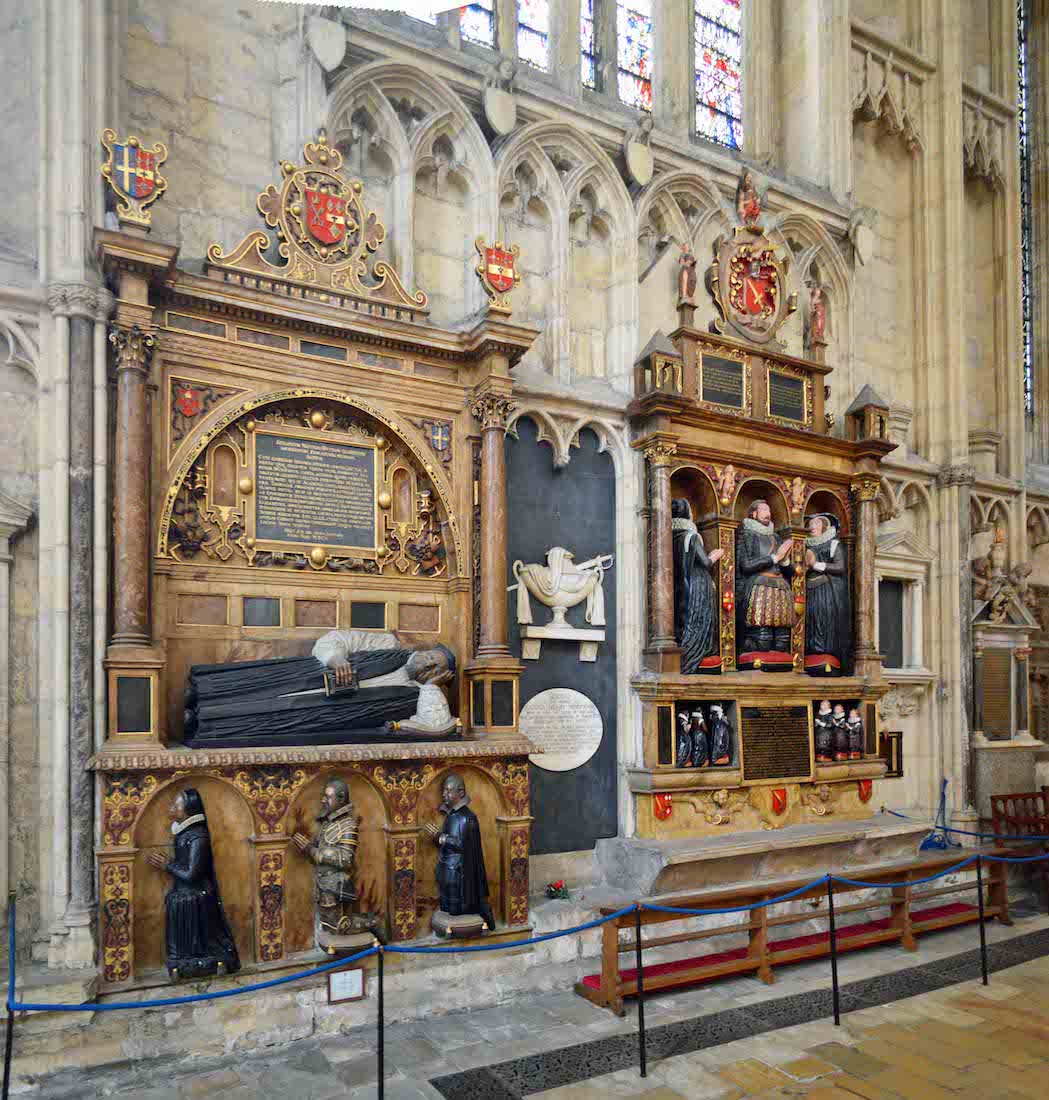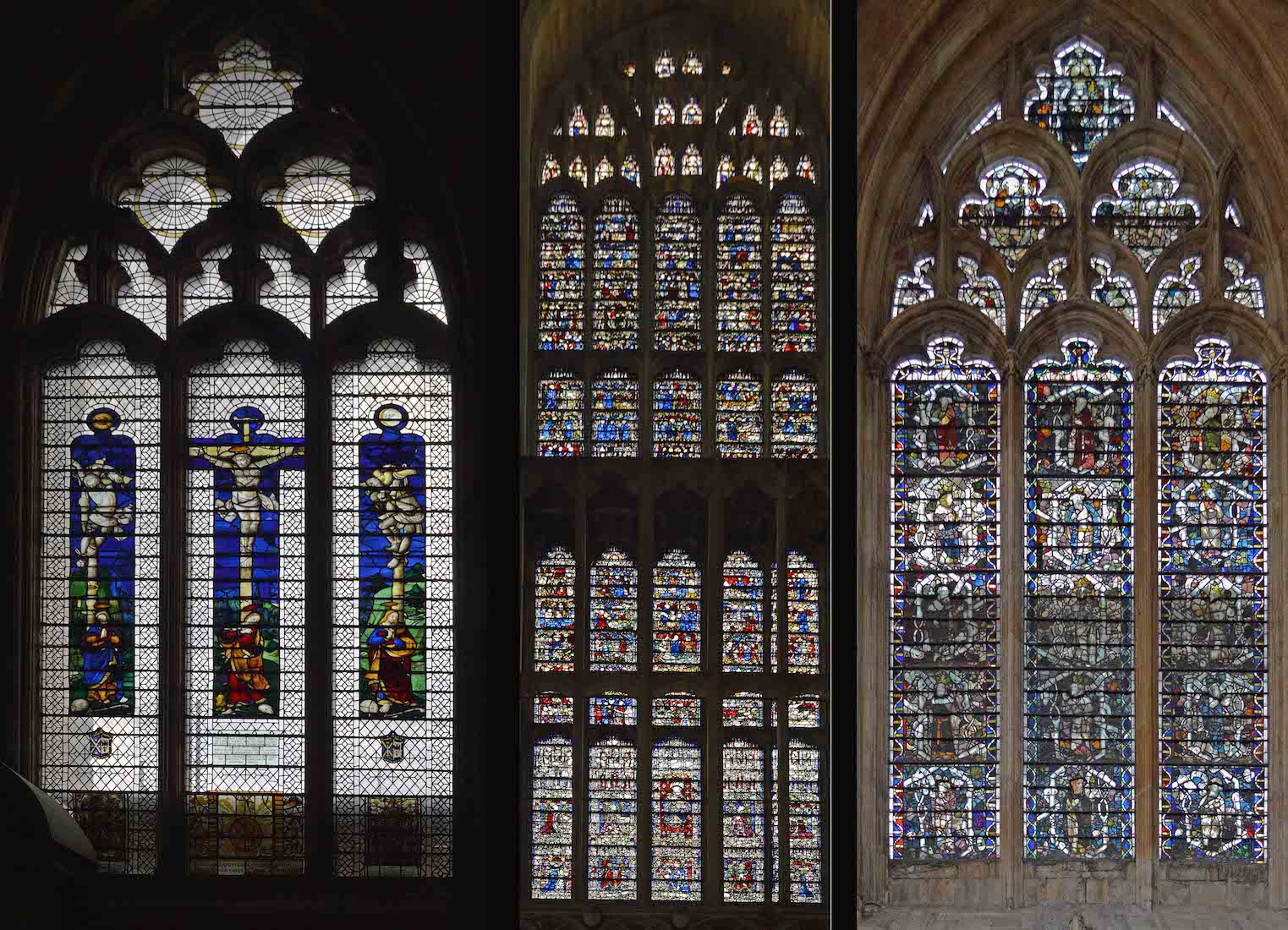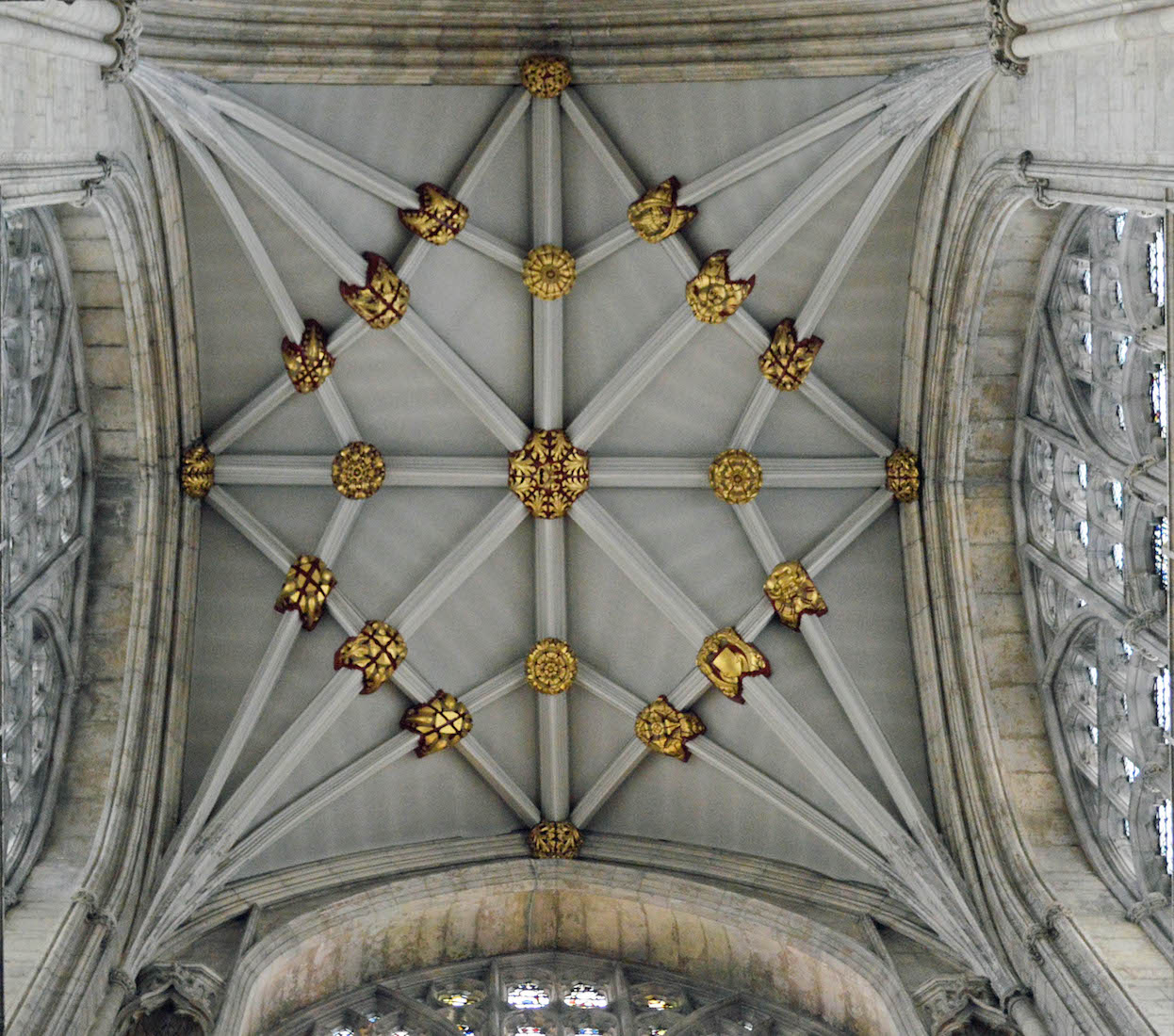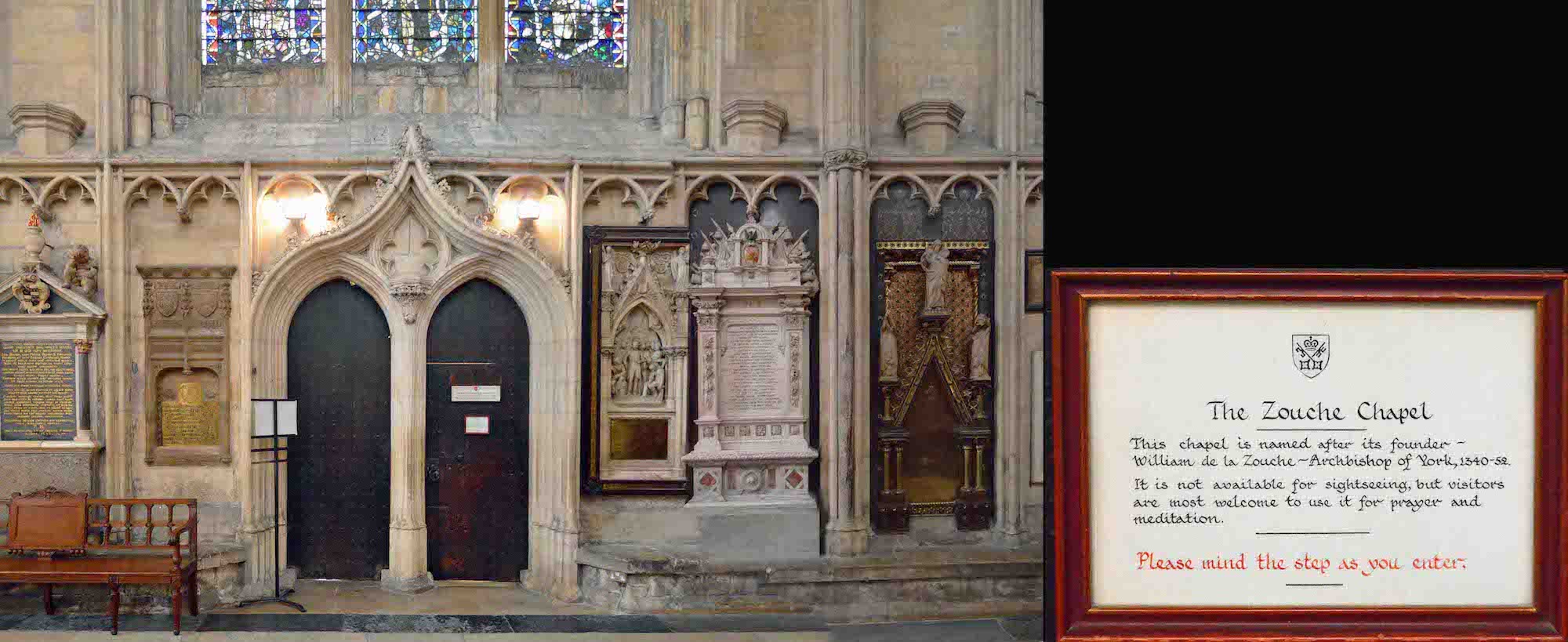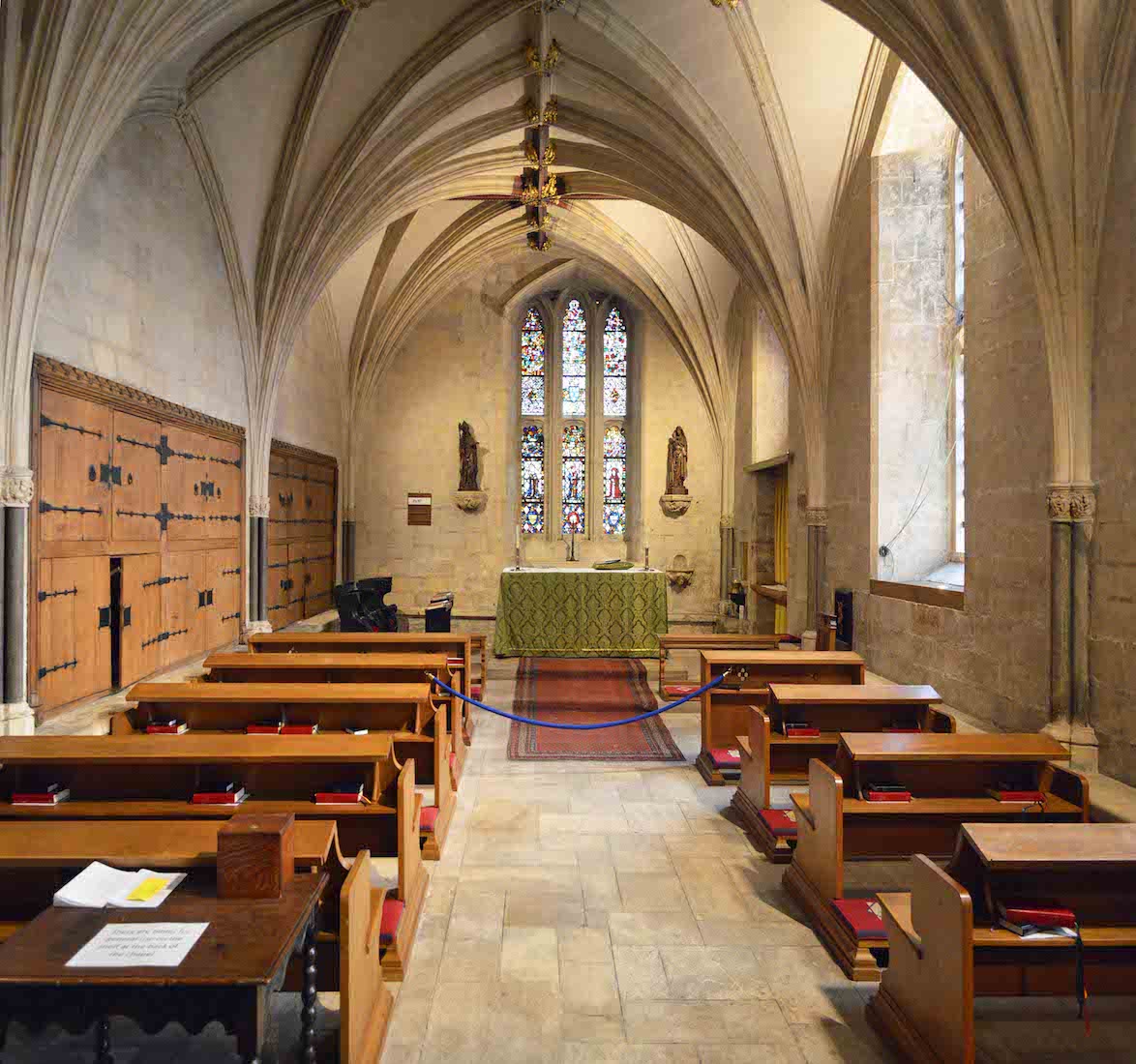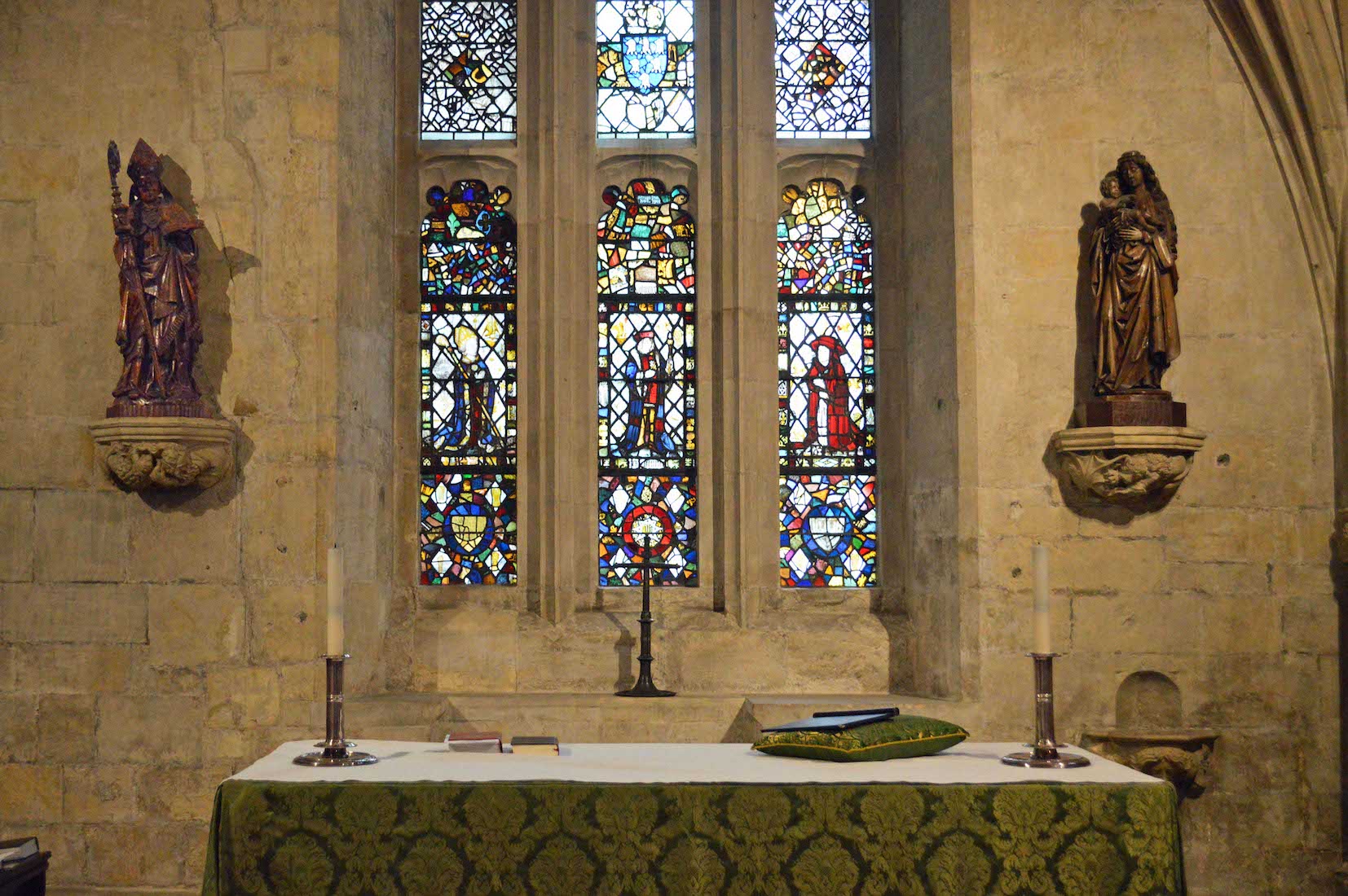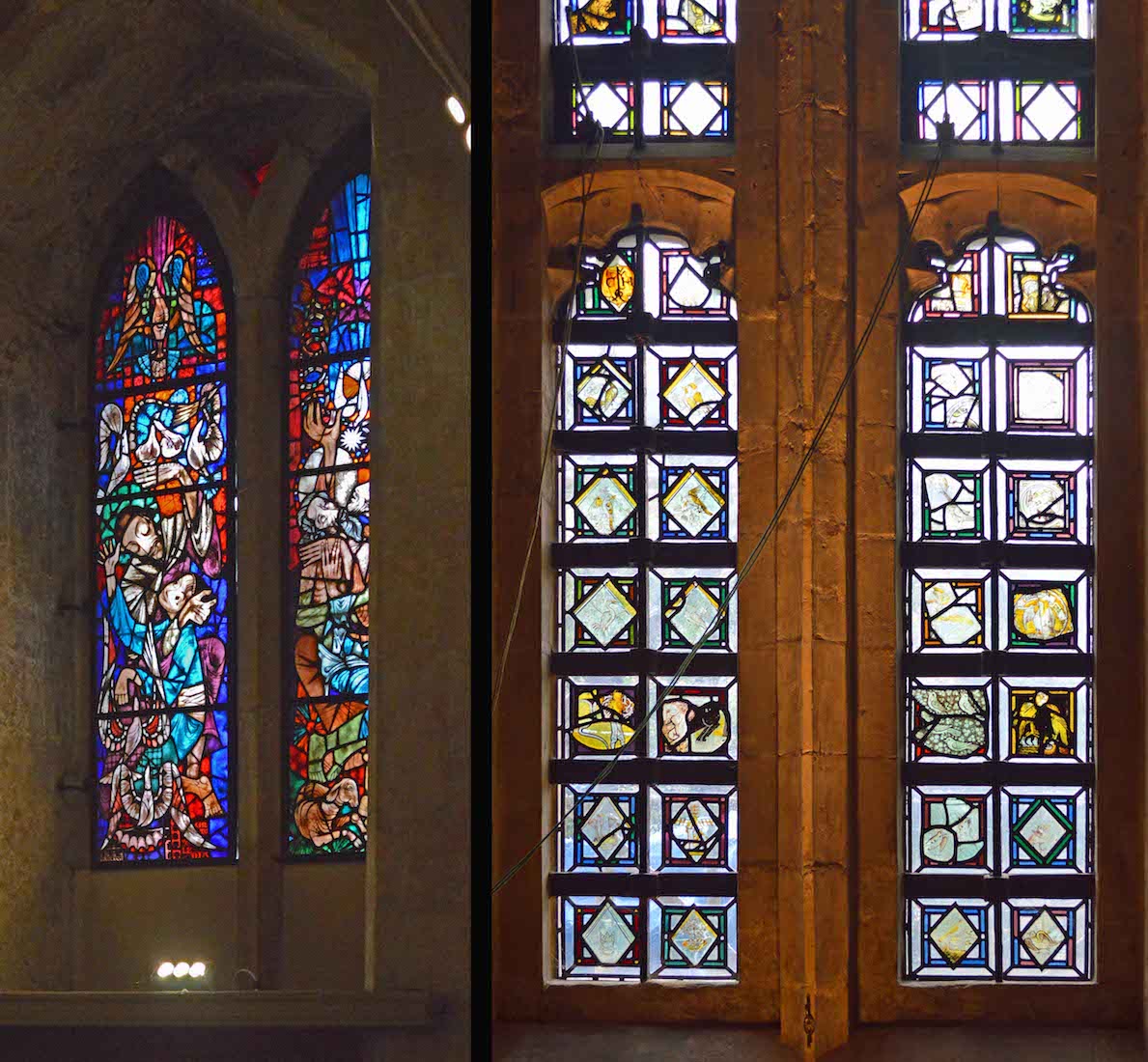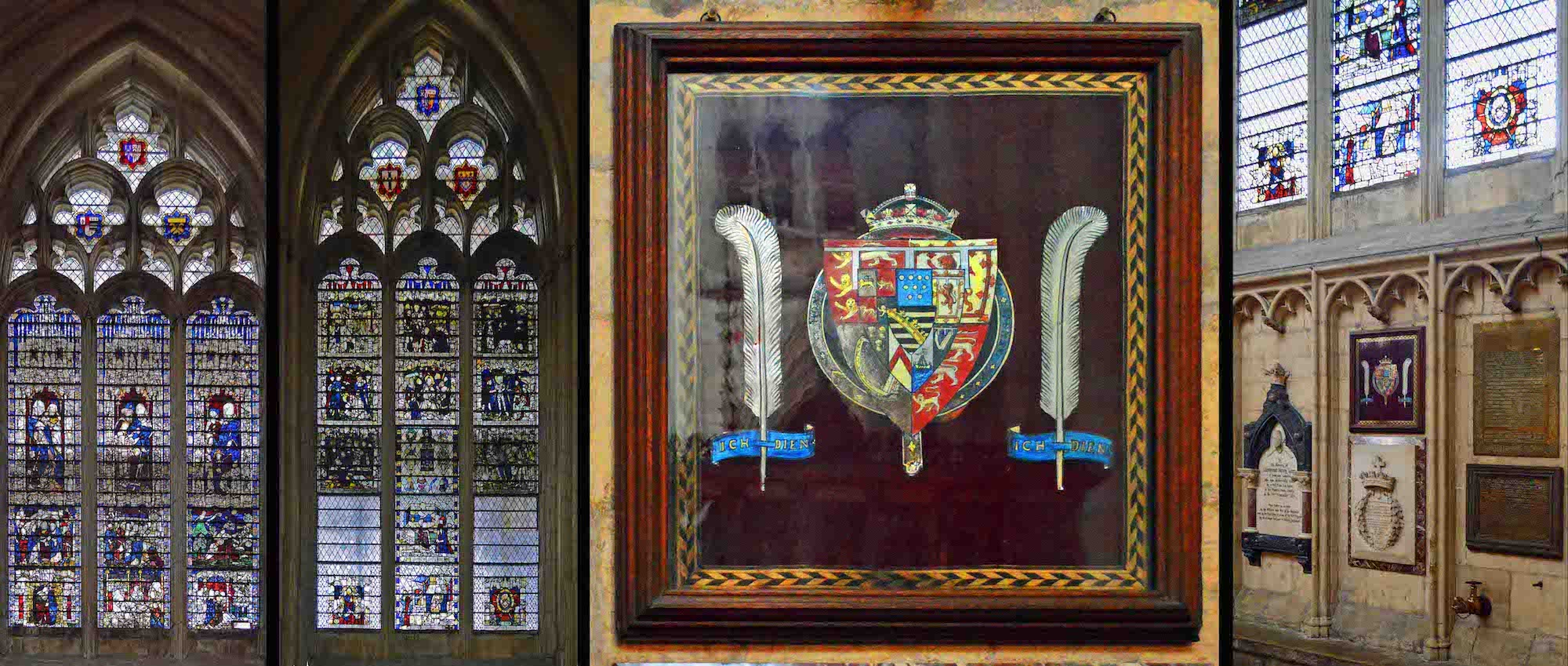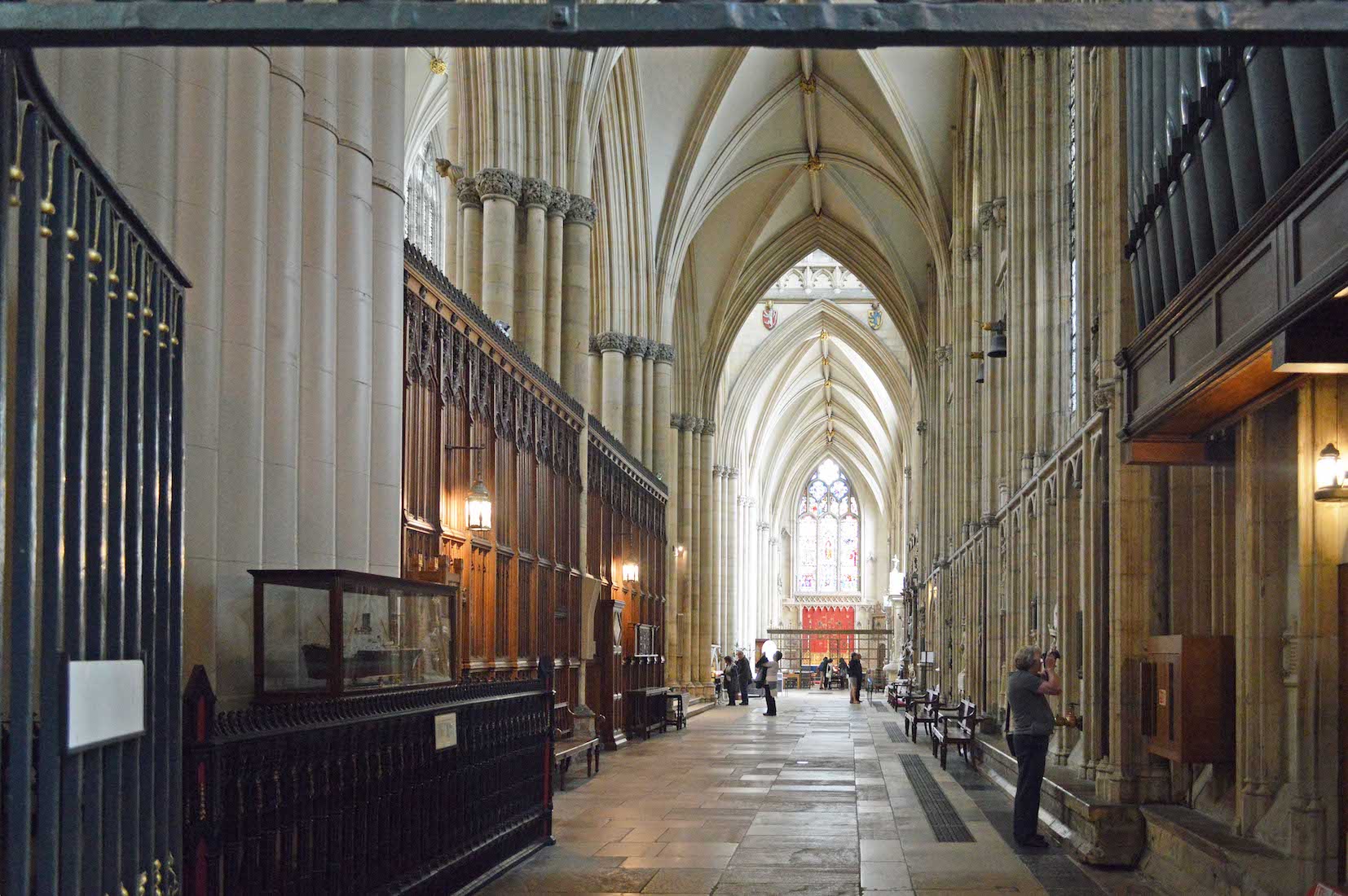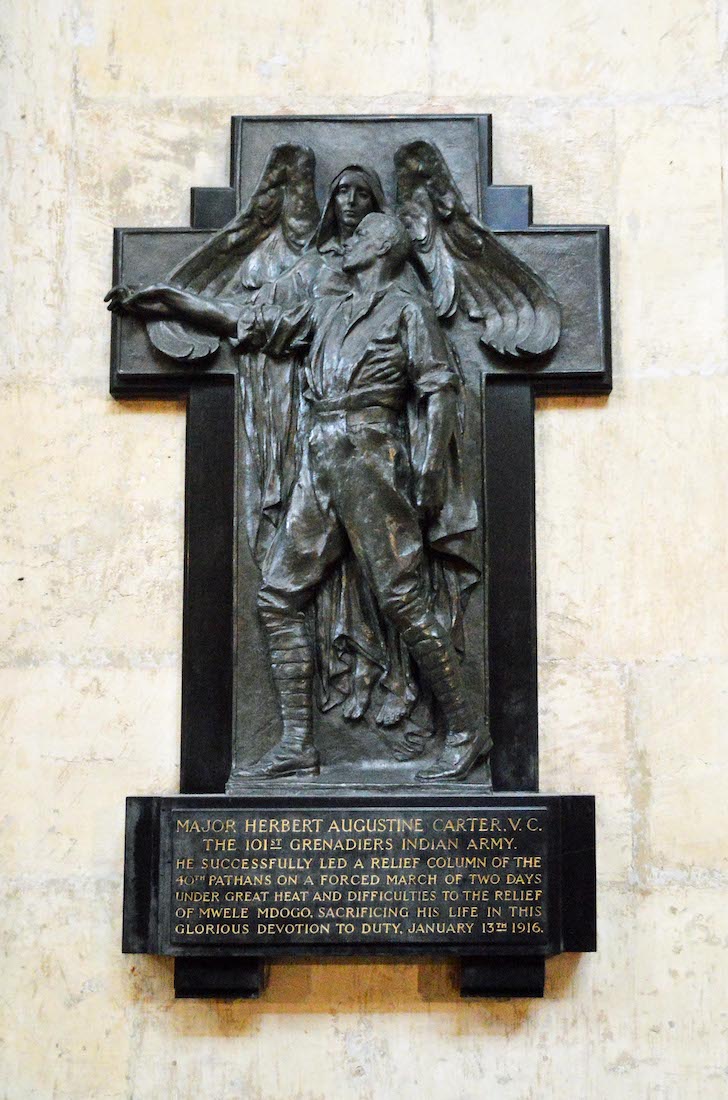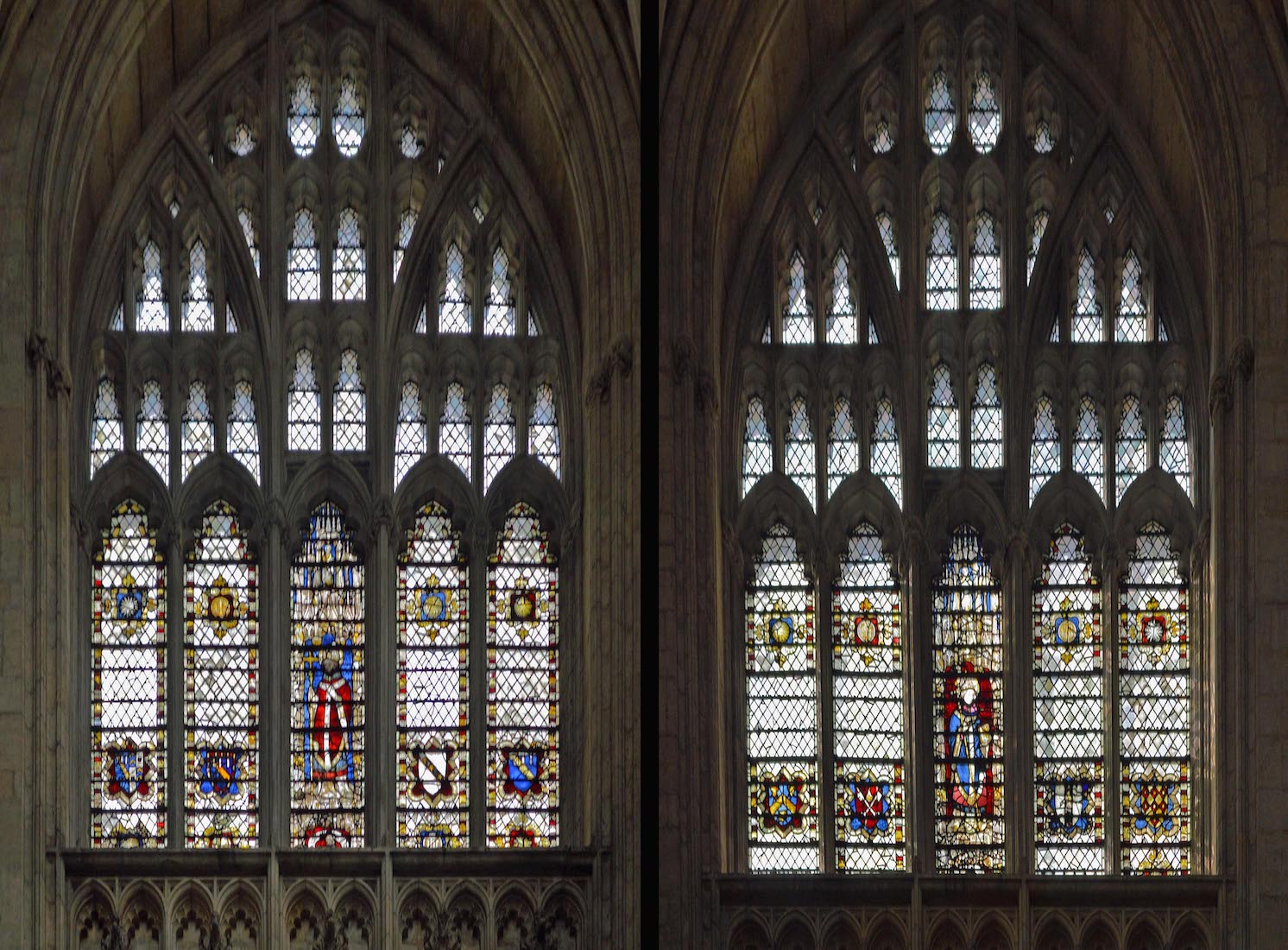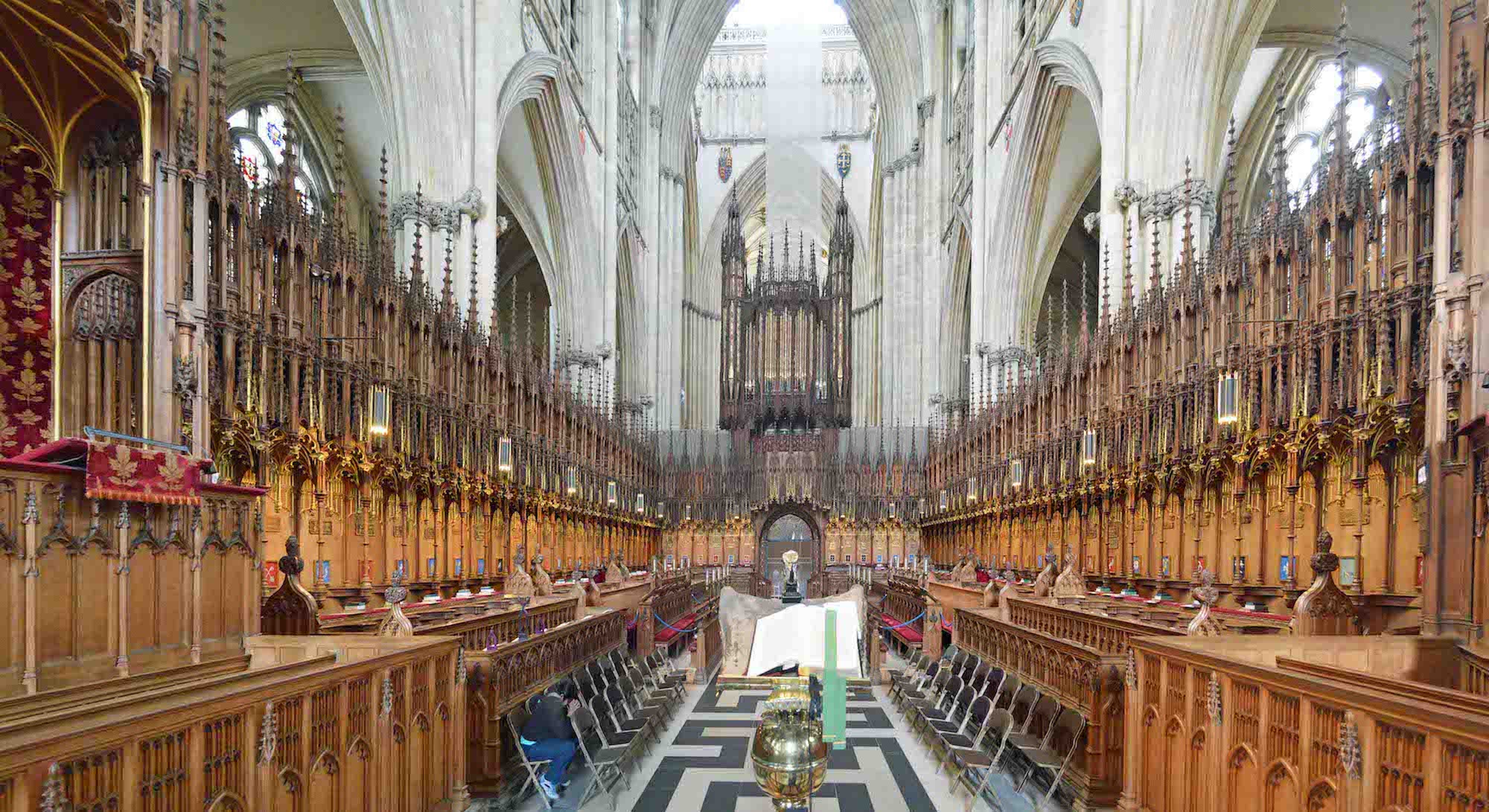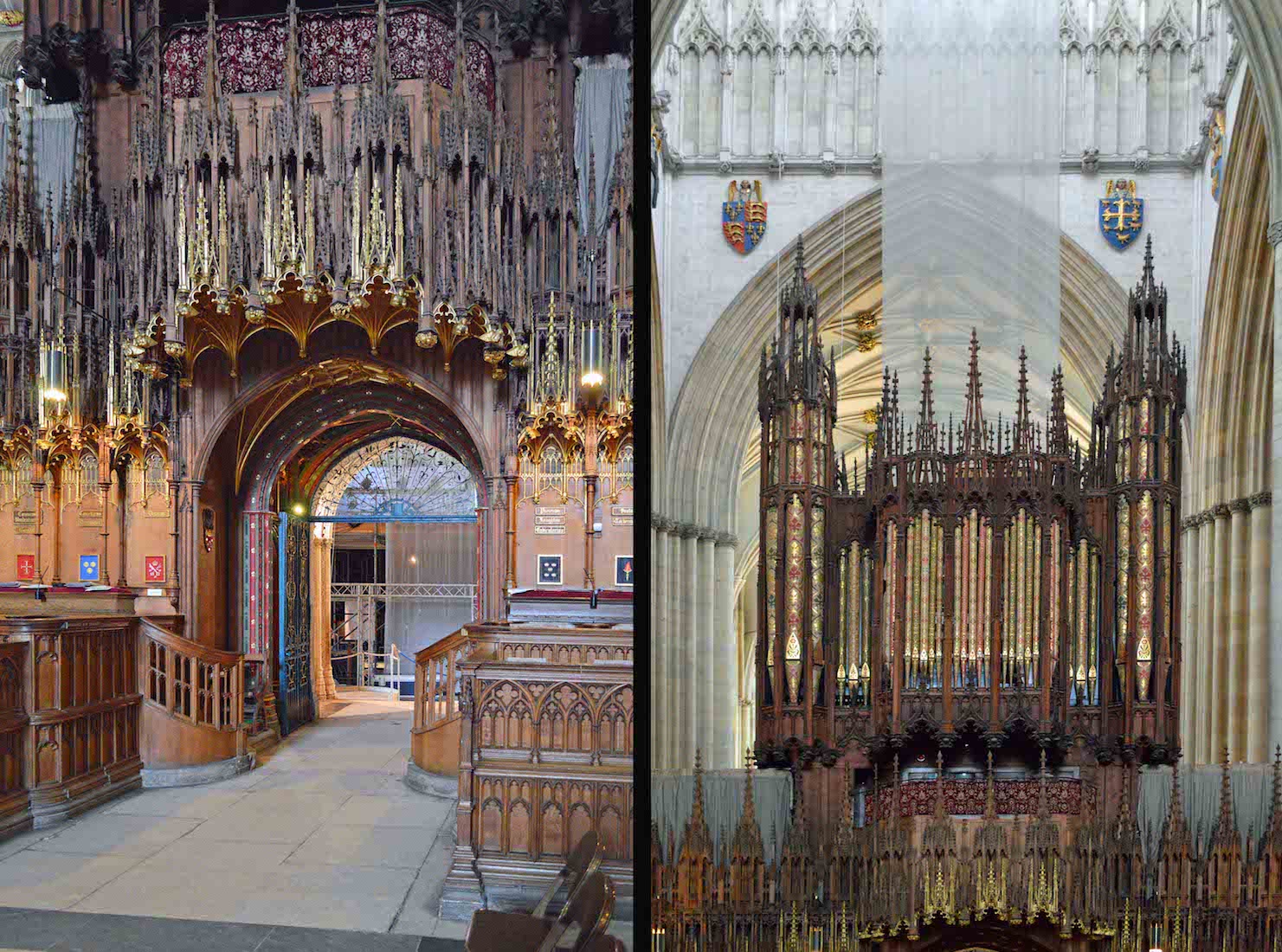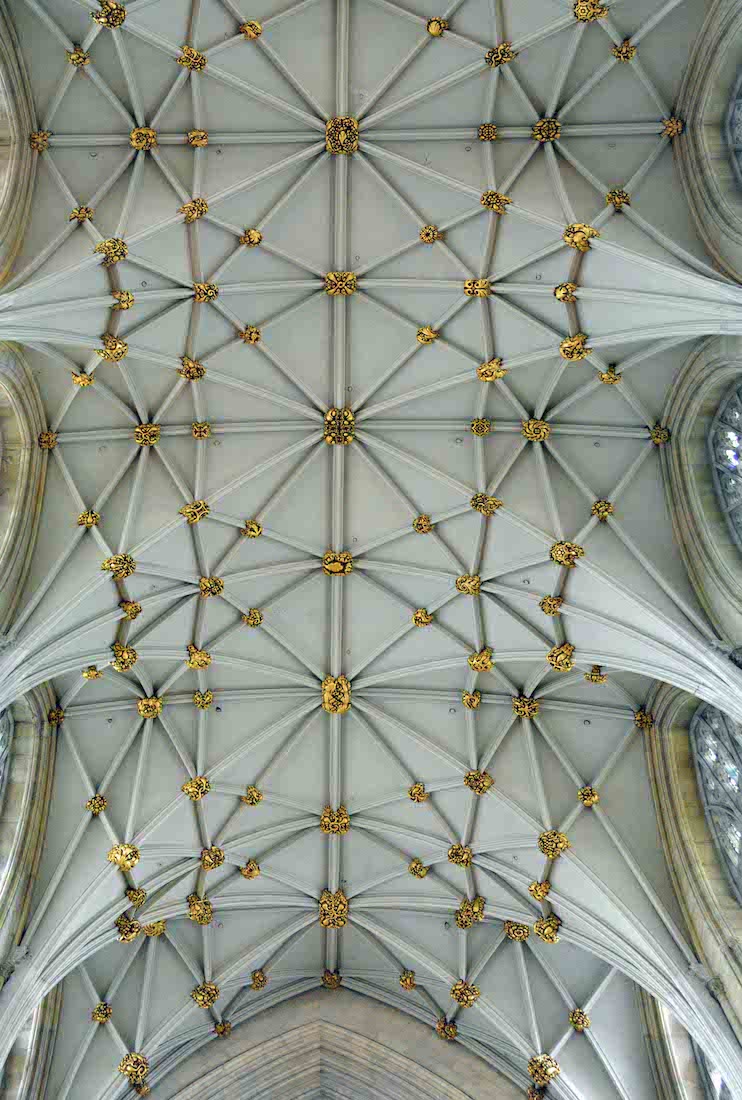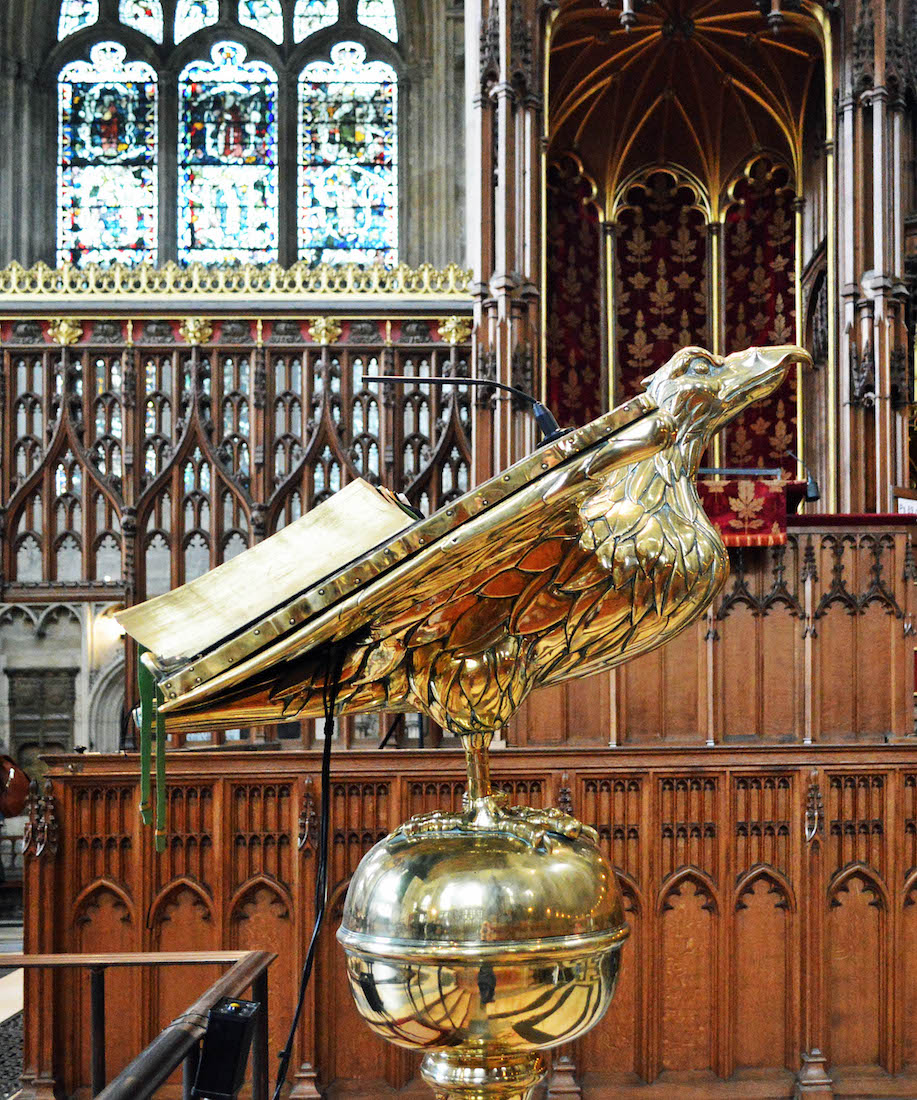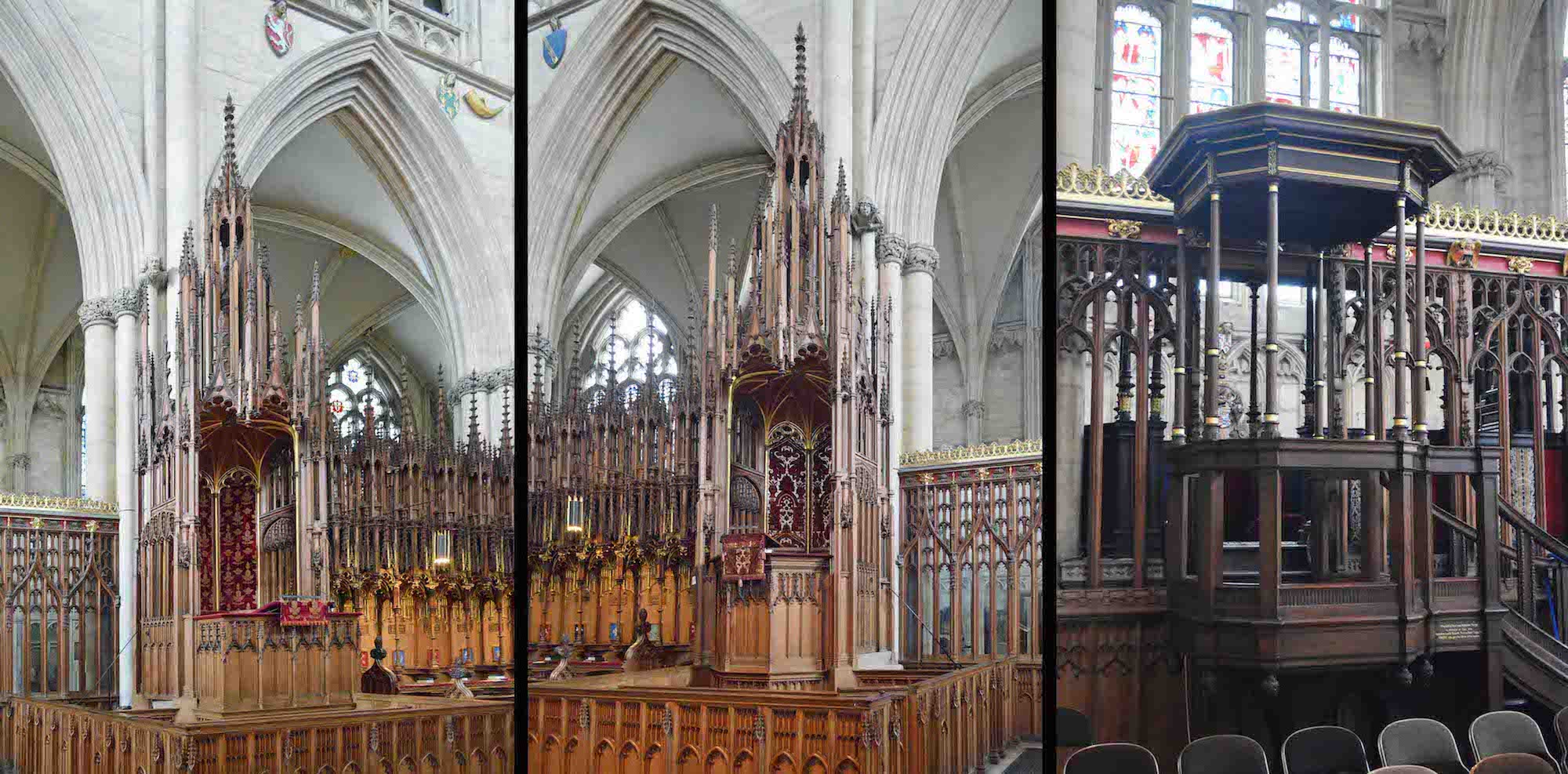101. ARCHBISHOP LAMPLUGH MEMORIAL
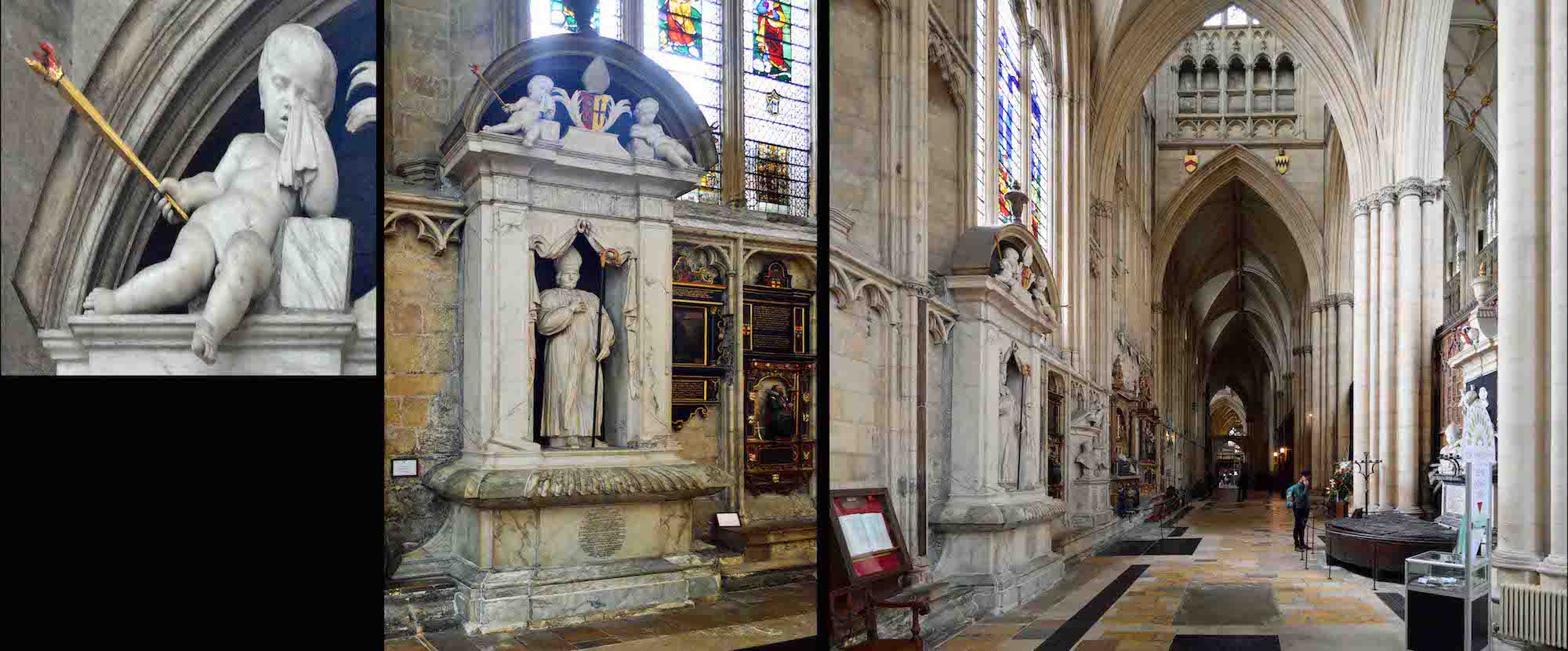
We stop before the large memorial for Archbishop Thomas Lamplugh (1615 – 1691) – an English churchman who became Archbishop of York. He was obviously sadly missed! This view along the aisle reveals items of interest on the North wall as well. PLAN
102. MEMORIALS TO BUILDERS, SURGEONS AND JOHN DOLBEN
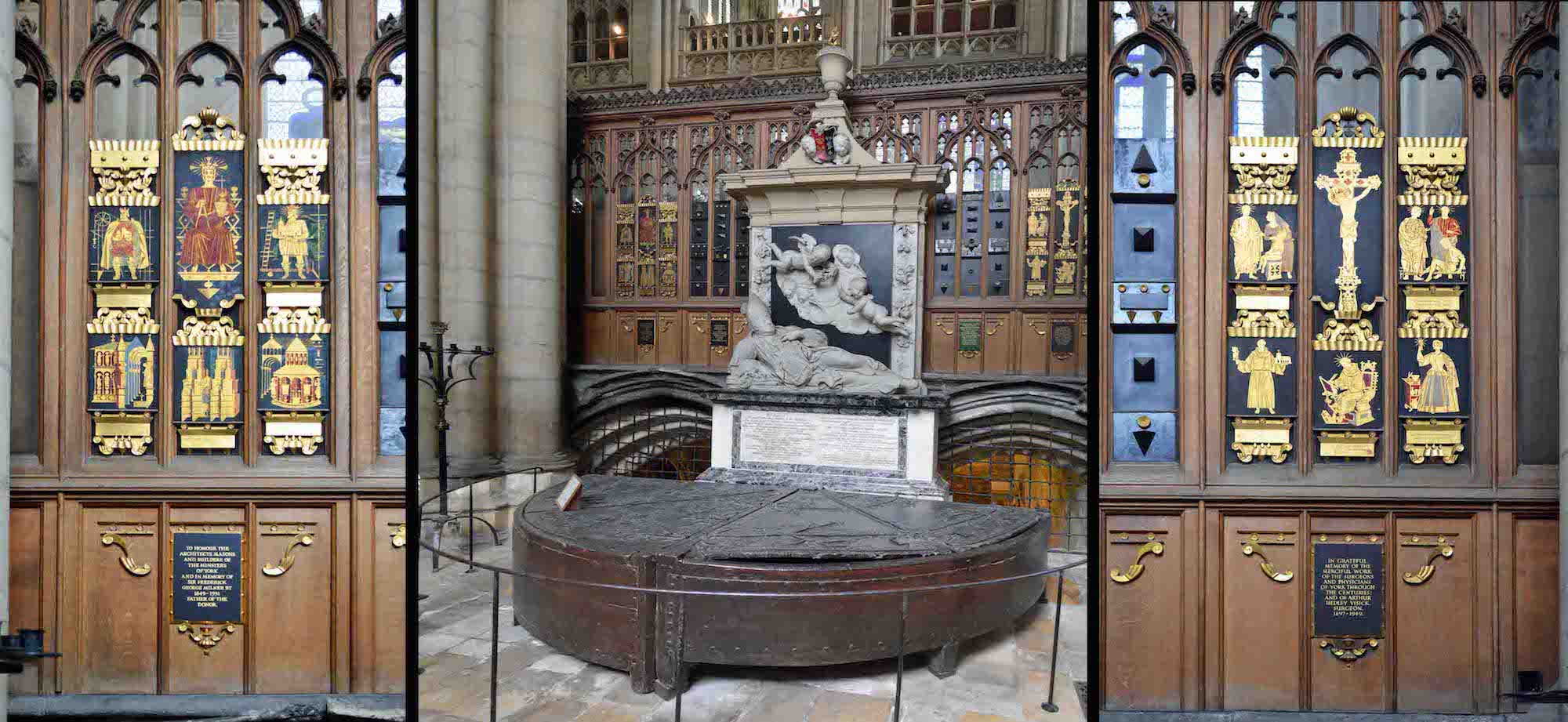
John Dolben (1625–1686) was an English priest, Church of England bishop and Archbishop of York (1683 – 1686). All descriptions of him agree that he was a man of commanding appearance, tall, handsome and dark, but inclined to fat. In the foreground are chests for storing copes. The outer memorials are self-explanatory.
103. ALONG THE SOUTH WALL
Further monuments along the South wall suggest that those remembered, and their families, spent a great deal of time in prayer. I wonder!
104. SOUTH WINDOWS
At left is a striking three light early 16th-century Crucifixion window which came to England in the early 19th century from the Church of St Jean in Rouen. The central Southeast transept window features scenes involving St Cuthbert, monk and Bishop of Lindisfarne (d.687). At right is the late C14th Tree of Jesse Window, formerly in New College Chapel, Oxford.
105. SOUTHEAST TRANSEPT CROSSING
The crossing of the Southeast transept has its own attractively designed roof: white with gold bosses. This is another ‘internal’ transept, contained within the outer wall of the South quire aisle.
106. ENTRY TO ZOUCHE CHAPEL
The Zouche Chapel is named after its founder William de la Zouche who was Archbishop of York from 1340 to 1352. The chapel is set aside for prayer and meditation.
107. ZOUCHE CHAPEL
The East (front) wall of the Chapel contains a window with a little statue on either side. In front is an altar with cross and candles. The Chapel is interesting in that the layout is not symmetric – at least, not about a central mirror line.
108. ALTAR AND WINDOWS
At the right of the window is a sculpture of Mary and the baby Jesus. Presumably the bishop at left is Bishop de la Zouche. Help is required in identifying the window figures.
109. ZOUCHE CHAPEL SOUTH WINDOWS
The modern looking window at left shows scenes from the life of Christ. The panels of the unusual window at right depict various birds and beasts – presumably an allusion to the life and interests of St Cuthbert.
110. BACK TO THE SOUTH QUIRE AISLE
The final window in the South aisle (shown right) contains scenes and panels taken from other church windows. They include 'The Vision of St Gregory’. Below is a framed display. Of this, I note that Prince Edward (the Black Prince) has ‘Ich Dien’ in his coat of arms, and there is mention of ostrich feathers.
111. SOUTH QUIRE AISLE LOOKING EAST
Reaching the West end of the quire aisle we look back. To our left is a glass case with a model ship. At right a lady is photographing a special cross..
112. SS VALE OF PICKERING
SS ‘Vale Of Pickering’ was a British cargo steamer of 1,551 GRT (Gross Registered Tonnage) that was sunk in collision with the SS Rotha on the 24th July 1929. At the time it was 30 miles North of Pointe d'Ailly and en route from Rotterdam for Caen with a cargo of coal. The name comes from a region of Yorkshire.
113. CARTER CROSS
Major Herbert Augustine Carter VC (1874 – 1916) was an English recipient of the prestigious Victoria Cross. He was the son of the vicar of St Erth in Cornwall and served in two campaigns in East Africa. This memorial to his memory is made of black marble with bronze figures, and designed by Sir Bertram Mackennal of Melbourne, Australia.
114. CLERESTORY WINDOWS
These clerestory windows can be seen from near where we are standing.
115. THE QUIRE
The area of a cathedral known as 'The quire’ (or choir) is always a special experience. Particularly as here, when the quire stalls are intricately carved and the presence of the organ looms large. Many cathedrals hold Evensong or morning Choral Eucharist here – an experience not to be missed.
116. QUIRE STALLS
Angels look down from above each stall, and two heads peer out lower down. Each stall is marked by a nameplate in Latin, and an identifyng picture.
117. QUIRE SCREEN AND ORGAN
Both organ and quire screen are ornately decorated. The organ has a chequered history. It dates from 1832 (Elliot & Hill) after 1829 fire. Reconstructed in 1859 by William Hill & Sons. Renewed in 1903 by J.W. Walker & Sons. Rebuilt by Harrison & Harrison in 1931. Modified in 1960 by J.W. Walker & Sons. Restored in 1991 by Principal Pipe Organs of York.
118. QUIRE VAULTING
The quire vaulting is in the same style as the nave and South transept, finished in white with gold bosses.
119. LECTERN
The eagle lectern is in the quire area (although it may not always be there). The eagle is the bird thought to fly most closely to heaven, and there is a powerful reference in Isaiah 40:31 about soaring with wings as eagles.
120. CATHEDRA, DEAN’S STALL, QUIRE PULPIT
There is some special woodwork in this area! On the South side, the cathedra is the bishop’s throne, and it is from here that this York Church gains its ‘Cathedral’ title. The Dean has a special stall, and there is another pulpit for use for services in the quire.


